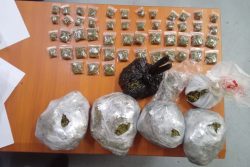Region Two rice farmers are set to benefit from $23 million to combat the challenges of El Nino.
According to a Government Information Agency (GINA) press release Minister of Agriculture Robert Persaud on Saturday made these announcements at a meeting with farmers assembled at the CV Nunes Primary School. The minister said that government has embarked on an assistance programme to help rice farmers move into the next crop. Support will be given in the provision of fertilizer and seed paddy to each affected farmer for every acre of land damaged. Cash crop farmers will be given planting materials through the Guyana Agricultural Producers Association.
Persaud also told the meeting that a significant amount of the said sum will be invested in D&I works because managing the water supply is critical. He said too that government has incorporated some of the recommendations farmers had made during consultations about the El Nino phenomenon, into the region’s programmes.
Further investment is also being made in water management through the National Drainage and Irrigation Authority (NDIA). “We have looked at the NDIA Act and we have found that there is a mechanism whereby we can establish in Region Two an independent authority that will report to the Region and the NDIA. This will allow farmers to have a direct input in this regard,” Persaud said. An independent board to manage the D&I needs in Essequibo will be established in June.
As regard payments to farmers, Persaud stressed that millers needed to make timely payments. He said millers will be forced to pay penalties after the 42-day grace period expires and as such the Guyana Rice Development Board (GRDB) has been clamping down on errant millers.
The minister also said government will continue to invest in the rice sector and work with millers to ensure that farmers are treated fairly. “We are putting a lot of emphasis to ensure that their livelihoods are safeguarded,” he said, adding that rice is significant for foreign exchange and as part of the strategic development plan; steps are being taken to ensure that it remains modern, competitive and value-added.
To date 87% of rice has already been harvested for the first crop of the harvesting period. Farmers are currently harvesting about 81 bags per hectare compared to 72 bags during the last crop. As such government is exploring new market avenues and a revised agreement was recently signed with Venezuela for a higher price “which would see us exporting paddy at close to US$460 per tonne and as much as US$700 per tonne of white rice,” he said.
GINA said senior technical officers of the ministry and members of the GRDB also attended the meeting.








